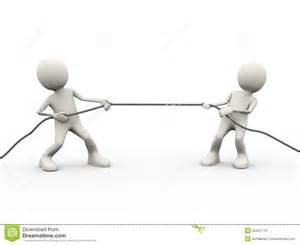by jcooper131 | Sep 6, 2016 | Houston Mediation and Arbitration
 This is the third post in my series of comments on the Wheel of Conflict developed by professors Bernard Mayer, Ph.D. and Christopher Moore, Ph.D. In developing the graphic illustration of the different factors that drive conflict, these two gentlemen placed Emotion immediately after Structure. There are sound reasons for their decision to place where they did because emotions drive one’s actions, behaviors, and even thinking.
This is the third post in my series of comments on the Wheel of Conflict developed by professors Bernard Mayer, Ph.D. and Christopher Moore, Ph.D. In developing the graphic illustration of the different factors that drive conflict, these two gentlemen placed Emotion immediately after Structure. There are sound reasons for their decision to place where they did because emotions drive one’s actions, behaviors, and even thinking.
More than 50 years of research offer compelling evidence that emotions strongly shape most decisions, and are a key driver of behavior, and are often the impetus behind conflicts in the workplace and even between companies. Emotions are not uniformly negative as both science and history teaches us. Strong emotions can drive people to achieve extraordinary things; even anger can generate positive outcomes.
But the converse is equally true in that emotions such as anger can create a negative and damaging environment in the workplace and is often the driver behind many workplace conflicts.
Psychologist John D. Mayer argues that emotions carry a physical aspect when they bridge thought, feeling, and action and can impact a person’s physiology both positively and negatively depending on the level of stress being felt at the time of the decision/action. This simple truth has been experienced by anyone confronted by a demanding task coupled with a critical timeline.
Managers and supervisors often fail to recognize that decisions people make in the workplace are judged, by those making the decision or taking the action, on the basis of the risk to themselves. That perceived risk strongly influences their decisions or their actions. Someone who feels anxious about the impact of the outcome on him/her may choose a more conservative approach, involve others, take longer to execute the task, and potentially sacrifice the best outcome for one that is safe.
A negative work environment will drive other negative behaviors. Doing the safe thing can lead to doing only the least necessary to stay “under the radar”, and it can lead to other more damaging behaviors such as missing schedules, making excuses, asking others to do the work for you.
Managers and supervisors need to develop an active awareness of those situations where emotions can have an adverse effect on the work, the cohesiveness of the group, and the productivity that is necessary to produce the necessary outcomes, and they must be able to react in a constructive way to avoid the potential for conflict without creating reasons for greater anxiety and uncertainty.
Want to know more? Visit us at www.cdci-mediaion.com or call us at 832-452-8537.
by jcooper131 | Aug 15, 2016 | Houston Mediation and Arbitration
Direct from The Ethics Workshop. Have you been to the library recently?
Well, come join us at the Kendall Branch of the Houston Library (see below) on August 25th.

Experience an Introduction to:
A NEW DYNAMIC – DOING THE RIGHT THING AT THE RIGHT TIME FOR THE RIGHT REASON®
Mark down the date and location shown below. Spend just two hours with us and you will learn about the building blocks for a more dynamic culture in the workplace.
Behavior drives failure and behavior drives success. Lean how to prevent/mitigate failure and increase success in your work.
WHAT WILL BE COVERED
In two hours YOU will learn:
That doing the right thing sets the stage.
That doing the right thing at the right time defeats failure
That doing the right thing for the right reason is the difference between success and great success.
In two hours find out how these building blocks apply to real life situations and can transform a department or a company.
AUGUST AT THE LIBRARY – join us on the 25th from 1:15 to 3:15 PM at 609 N. Eldridge Parkway, Houston, TX 77079.
HOW MUCH DOES IT COST?? WOW! YOU ARE IN LUCK. For this day only it is FREE.
The regular price for this is event is $189.00 per person, but we are introducing it to businesses in West Houston and Katy on the date indicated above through this no cost introductory offer.
To register, or for more information about other dates, please contact Jerry Cooper at: 832-452-8537, or at jerry_cooper@att.net.
Jerry P. Cooper
CDC Integrated Services, LLC
by jcooper131 | Aug 4, 2016 | Houston Mediation and Arbitration

In my earlier post I introduced the Wheel of Conflict created by Professors Bernard Mayer, Ph.D. and Christopher Moore, Ph.D. When you read their work and the work of other practitioners, the starting point is often a discussion about the role of structure as a source of conflict. The point the two authors emphasized was that many conflicts result from the dynamics that exist between a manager/supervisor and the employees that report to him or her.
The primary fact of any company’s or organization’s structure is they contain a hierarchy where the higher you are in an organization the more authority and power you have over the actions and decisions of others. The manager or supervisor is the key player in anticipating and mitigating the potential for conflict. Therefore, one of his/her primary rolls is avoid being the source of conflict.
In any department, group, or team conflict is inevitable because the members of that organization will have different views on how to advance the work and often there will be differences of opinion on how to proceed. These differences can be exacerbated by the realities that every organization faces: limited resources, limited time, budget constraints, and a range of other constraints as well.
The manager or supervisor has a critical responsibility to see that the structure under which the team operates does not become the problem. The organizational structure by design puts limits and controls over any process and the people there. The manager’s goal is to make those constrains as neutral as possible.
It often sounds trite, but the key to eliminating structure as a source of conflict lies in the way managers communicate with the other members of the team. What gets communicated, how it’s communicated and when are critical factors in how a team responds to the information they must work with.
by jcooper131 | Jul 19, 2016 | Houston Mediation and Arbitration

Wheel on train service vehicle
No single element in a conflict stands alone, and no conflict arises from one single reason. There are multiple factors and these are better understood when they are placed in relation to a wheel as discussed below.
Structure, emotion, history, communication, and values are elements/factors that influence the dynamics of conflict in the workplace. All of these exist to some degree in every conflict, and how they interact and influence each other often drives the direction and the severity of a particular conflict.
Professors Bernard Mayer, Ph.D. and Christopher Moore, Ph.D;’long time students, teachers, and practitioners of conflict resolution, created a graphic in the form of a wheel to help those who want to avoid, mitigate, and when necessary resolve conflict. Each of the above elements, viewed as a section of the wheel, form distinct aspects of a conflict, and those confronting conflict can use this representation as an aid to thinking their way through the minefield that is conflict in today’s workplace.
In the coming weeks I will use this space to discuss each of these factors and why looking at them individually is a necessary first step in understanding the larger picture. The concept of the Wheel of Conflict is important for those trying to resolve conflict because it helps them understand the complex and tense emotions that are present in these situations. The wheel reminds us that one’s point of view is not necessarily shared by the others involved in the conflict.
I will discuss structure in more detail in my next post, but for the moment I will leave with Messrs Mayer and Moore’s description that it is in part “…the dynamics of the participants that might be creating the conflict, for example, boss and employee…”
by jcooper131 | Apr 22, 2016 | Houston Mediation and Arbitration
 The word Argument is heard often in the field of conflict resolution. It is one of the words heard most often when a conflict is examined during the course of a mediation or even a post-mediation lessons learned process.
The word Argument is heard often in the field of conflict resolution. It is one of the words heard most often when a conflict is examined during the course of a mediation or even a post-mediation lessons learned process.
It is an important word with broader application that one gets by listening to what goes on around them. Many of us hear every day that someone got into an argument with so and so. All of us can benefit by the reminder that the most common understanding of this word is well down the list of definitions. There are a total of six definitions for this word, but one is obsolete, so only five are relevant today.
For this post, I believe the strongest benefit for us in our everyday considerations is number two on the list which is “a reason or set of reason given in proof or rebuttal”. Closely following this definition is the third definition which is “a coherent series of statements leading from a premise to a conclusion”.
Defining an argument as a quarrel or disagreement is well down the list. My point in this post, in a sense, is a continuation of my earlier post. As executives, leaders, managers, your goal is not to avoid or mitigate disagreements, but deal with them through reasoned persuasion or by reasoned argument. And lest anyone forget, reasoned argument carries with it the obligation to listen using both active listening and empathic listening skills.
Want to learn more? We can help. Call us at 832-452-8537 or write us at: jerry_cooper@att.net.
by jcooper131 | Apr 3, 2016 | Houston Mediation and Arbitration
 The companies I consult with fall into one of two camps; they know they will have problems if they are not proactive, or they have a problem and it needs resolution now. I have far too few of the first, and more than I should of the second. Periodically I remind my readers that there is real peril in not resolving conflict in a timely manner. I have written before about the adverse impact on profits, on organizational cohesion, and the impact on quality and reliability of a product or service.
The companies I consult with fall into one of two camps; they know they will have problems if they are not proactive, or they have a problem and it needs resolution now. I have far too few of the first, and more than I should of the second. Periodically I remind my readers that there is real peril in not resolving conflict in a timely manner. I have written before about the adverse impact on profits, on organizational cohesion, and the impact on quality and reliability of a product or service.
Many studies over the past 25 years give ample empirical evidence of the damage resulting from conflicts that are ignored. So why do so many companies shy away from explicitly preventing conflict or confronting conflict once it begins to impact the organization. What is it about a company’s culture and the leadership that shapes that culture? Let’s face it folks; a conflict produces a lot of early warning signs, and it’s the leader’s job to heed those warnings and change whatever is producing those clear warnings. When they fail to act, to adjust, they are failing as leaders.
When I meet with a CEO or his key executives I ask each of them some simple questions.
Do you avoid talking about conflicts that inevitably appear?
How proactive are you in promoting procedures and processes for training managers and employees in conflict resolution?
How aware are your employees of the various techniques and tools available to them to prevent, mitigate, or resolve conflict?
The responses to these three questions varies greatly, and that is why I stay busy.
Want to learn more? Visit us at www.cdci-mediation.com, or call us at 843-452-8537.
 This is the third post in my series of comments on the Wheel of Conflict developed by professors Bernard Mayer, Ph.D. and Christopher Moore, Ph.D. In developing the graphic illustration of the different factors that drive conflict, these two gentlemen placed Emotion immediately after Structure. There are sound reasons for their decision to place where they did because emotions drive one’s actions, behaviors, and even thinking.
This is the third post in my series of comments on the Wheel of Conflict developed by professors Bernard Mayer, Ph.D. and Christopher Moore, Ph.D. In developing the graphic illustration of the different factors that drive conflict, these two gentlemen placed Emotion immediately after Structure. There are sound reasons for their decision to place where they did because emotions drive one’s actions, behaviors, and even thinking.




